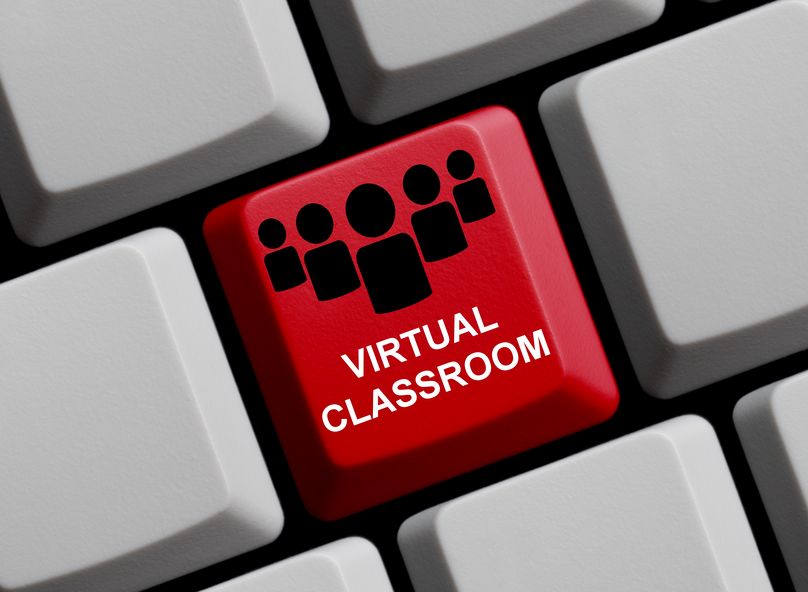How Can We Advocate for Learners in the Virtual Classroom?
The virtual classroom offers a flexible, dynamic learning environment for modern learning blends. We often think about questions such as: When can...
4 min read
 Karen Vieth
:
Jan 17, 2023 9:49:13 AM
Karen Vieth
:
Jan 17, 2023 9:49:13 AM

It almost goes without saying that "good" virtual facilitators possess virtual classroom literacy, are technically savvy, and practice good time management skills. All three of these characteristics contribute to a solid foundational skillset.
But taking your competencies from good to "great" involves an advanced approach to learner engagement, platform management, and content delivery. These so-called "Master Virtual Facilitators" make engagement in hybrid and virtual classroom look easy. But how do we get started?
The answers lies in the quantity and quality of your engagement techniques, and by applying soft-calls, springboarding, and 'connecting the dots' to communicated with your learners.
Learner engagement in the modern virtual classroom begins with the body language in the bandwidth. In traditional classroom learning environments, facilitators can literally read the room. Through eye contact and subtle visual cues, they can gauge learner interest, engagement, confusion, and collaboration. In the virtual classroom, though, the same technology that enables global learning obscures the visual indicators of trouble or success upon which facilitators depend.
Master facilitators find ways to see through the virtual noise using the tools available to them. This takes a great deal of energy for instructors, as it requires keeping track of learner participation, time between interactivity prompts, and balancing content delivery with application.
The theory behind building deep connections with a virtual learning audience begins before the session. Strong instructional design sets the stage. Designers can encourage learner communication every three to five minutes in a session, and help facilitators determine the basic level of learner engagement taking place at a glance.
In the execution of virtual blended learning design, master facilitators think through the quantity and quality of learner engagement processes.
Quantity of Learner Engagement
One simple and quick way for facilitators to read the body language in the bandwidth is to literally count the times participants respond to prompts. InSync facilitators keep a paper class roster on their desk during each session and place a tick mark next to each learner’s name every time they participate or contribute. This technique helps them prompt individual learners who may have disengaged from the process.
Beyond keeping a literal tally of learner participation, understanding the quantity of learner engagement requires facilitators to consider:
These questions help facilitators connect the delivery of content to the learners’ engagement. Keep in mind, though, that high numbers don’t necessarily equate to learning. Instead, quantity measurements imply facilitators have gained learners’ attention at a minimum level.
As an advanced facilitator, you understand that the quantity of responses received from learners offers a way of determining basic learning engagement levels.
Quality of Learner Engagement
Master facilitators move beyond quantity and towards quality to judge learner engagement in the virtual classroom. They think through questions like:
Skilled facilitators use the quality of learner feedback and responses to assess activity success. They ask in-depth questions and encourage learners to volunteer stories. See if you can incorporate these processes into your own facilitation practice. Remember: impactful blended training aims to connect content to real world work. Your facilitation process can help achieve that goal by creating an environment where learners feel comfortable offering thoughtful responses.
When first transitioning from the traditional classroom to the live online environment, the technology can feel like a hindrance rather than a help. But by considering and encouraging both the quantity and quality of learner participation, you, too, can read the body language in the bandwidth and connect with your audience on a deeper level.
Our team relies on a number of tried-and-true facilitation methods to connect with live online learners more deeply and more meaningfully. For virtual facilitators, effectively “reading their audience” ensures learning actually happens.
These three techniques allow you, the facilitator, to move beyond basic presentation skills and towards more effective instruction that encourages learners to synthesize ideas and apply what they’ve learned in the protective classroom environment.
Soft Calls
Advanced virtual classroom facilitators frequently use a technique called soft calling to create two-way learner engagement. Facilitators pay attention to hand raises, poll participation, and whiteboard contributions to determine how often learners interact with the presented material.
Short chat blurbs, verbal observations, and whiteboard comments can provide facilitators with critical information for expanding and continuing the conversation. As a facilitator, you can pull in things learners have stated, and build upon it by saying something like,
“Wow! That’s so interesting that Jane has used this leadership recommendation at a previous role. Let’s discuss the value of this style.”
This is a soft call. And it demonstrates that facilitators aren’t just pushing slides. They’re truly paying attention to learners.
Soft calls can increase the quantity of learner interaction in almost any session. It helps hold participant attention and encourages emotional investment.
Springboarding
Soft calls offer a starting point for additional advanced facilitation techniques. In our experience, soft calls leader to springboarding – a method instructors leverage when the results of soft calls lead into the next conversation.
For example, after soliciting red Xs and green checks from the class, a facilitator may say, “Jane, you indicated that you’ve encountered this situation back on the job. Can you please come off mute and share how that felt?” Jane’s answer would then springboard into additional conversation when the facilitator asks, “Mark, if you ran into the same problem Jane experienced, how would you handle it?”
Beyond engaging just a few participants, advanced facilitators can also ask for contributions from the whole group by asking everyone to put their insights on the whiteboard.
Springboarding encourages the learning to go off script, encourages collaboration and contribution, and makes the content feel truly meaningful for adult learners.
Connecting the Dots
When facilitators connect the dots, they create connections between learner experiences and the designed content.
After generating off-script conversation through springboarding, an advanced facilitator will comment, “Mark’s reaction to the model situation is interesting. It reinforces the core concept we discussed about 15 minutes ago before the breakout room activity.” After revisiting and reiterating the session material in question, the facilitator may ask if anyone’s opinion of the material or example situation changed at all.
Advantageously, these three advanced facilitation tips build upon one another – soft calls set the stage for emotional engagement, springboarding builds insightful collaboration, and connecting the dots circles back to the critical information learners need for day-to-day success. Combining foundational theory with these actionable techniques allows you to connect with your audience at a deeper level.

The virtual classroom offers a flexible, dynamic learning environment for modern learning blends. We often think about questions such as: When can...
What really goes on behind the scenes when you go live in a virtual classroom? How do the facilitator and the producer manage to conduct the session...

Years ago when I was teaching virtual facilitation skills, there was a section called “disaster recovery”. I poked fun at this, saying it seemed a...